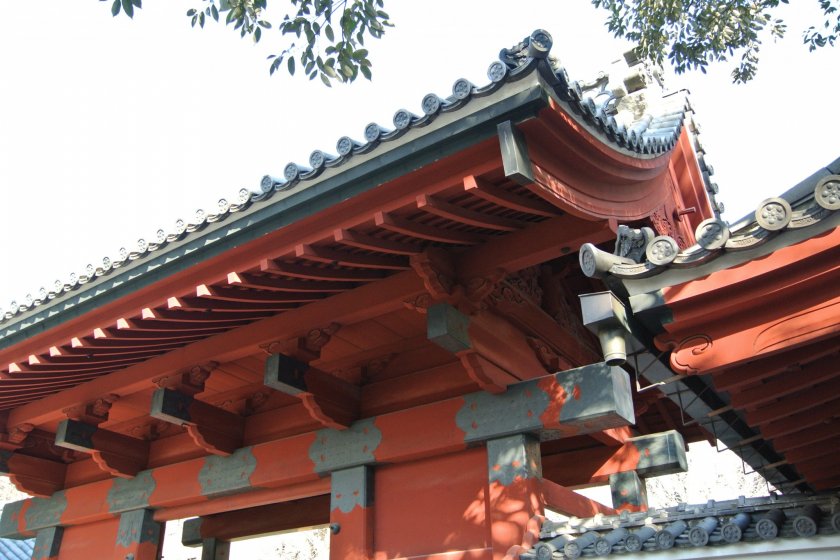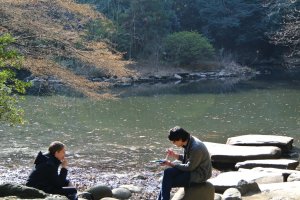The Hongo campus of Japan’s most prestigious school, The University of Tokyo, is quite beautiful, as is the neighborhood surrounding it. Once the home of Edo era feudal lords, the Maeda Family, the campus still includes remnants of those bygone days. Today, let’s take a stroll around the campus, and visit some interesting spots in the area, as well.
Before visiting the campus, let’s drop by the small Hoshin-ji Temple and its monument to Meiji-Taisho era writer Ichiyo Higuchi. It is on the left side of Hongo Dori Street, between Hongo 3-chome and Hongo Yayoi. Ichiyo did not live a particularly happy life and she died from tuberculosis at the age of 24. Her struggles helped her develop a strong character and become a good writer, too. Her image has adorned the 5,000-yen bank note since 2004.
Now, let’s visit the campus. Walking toward Hongo Yayoi on Hongo Dori you can find a very big, old-fashioned, red gate on the right side of the street. This is the famous Akamon (Red Gate) of The University of Tokyo. There are many book shops on this street, as well as reasonable priced restaurants for students, too.
On campus, the Yasuda Koudo Lecture Hall is one you should visit, mainly for its history. It was here in 1968-69 that students engaged in hard fought battles with the police and authorities as students blockaded the hall and took control of it. Afterwards it was closed for a long period of time. It was an incident that I will never forget. Many students and protestors were arrested during the standoff. You can still see pot marks on the wall from the violence that took place.
Also on the campus is the small and very peaceful Sanshiro Pond just beside the Yasuda Lecture Hall. There are many carp and birds playing here. And also some international students relaxing and chatting during their lunchtime. They might not know anything about what happened long ago at the Yasuda building. You can walk around this pond within 10 minutes or so.
As you continue your stroll through the campus, you will find many bronze statues of former professors and presidents of the university.
Now, let’s exit the campus by passing through the back gate, the Yayoi Gate.
Diagonally across from the gate, you can find the small Yumeji Museum. The museum includes a Taisho era-like café, the Minatoya Cafe. Admission is 900 yen for the museum. Yumeji painted many ennui and unique women who seem somehow very different from modern day women. All of the women in his paintings have soft lines and very thin shoulders. But their eyes are all strong, seeming to wish for their own happiness or a lover. These ladies are still in the corner of this museum and waiting and waiting and waiting… (Note: Yumeji Museum does not allow any photo to be taken inside the museum). Yumeji Museum: 2-4-2 Yayoi Bunkyo-ku Tokyo (website in Japanese)
After a 10 minute walk down Koto-toi Dori from the Museum we come to Nezu Shrine and Otome Inari Shrine together. They too are not big shrines, but very traditional. During the azalea season (late April-early May) they are very beautiful. Although Nezu Shrine is for the worship of a Shinto God, Otome Shrine is for the worship of the Goddess of Rice. By the way, you can find a very tiny but nice book store in front of this shrine’s main gate.


































